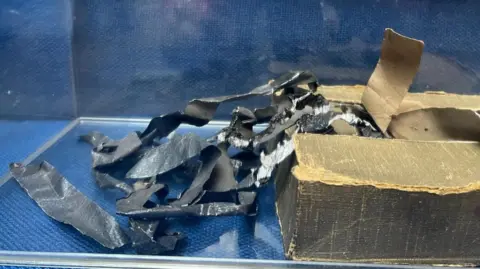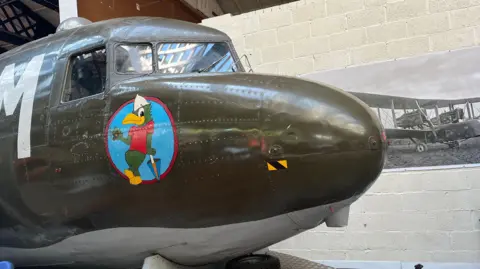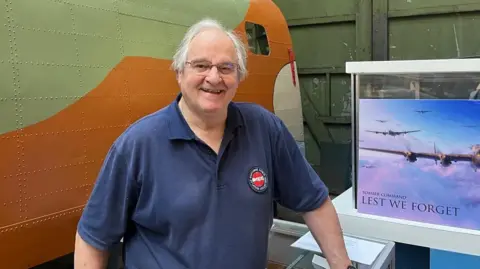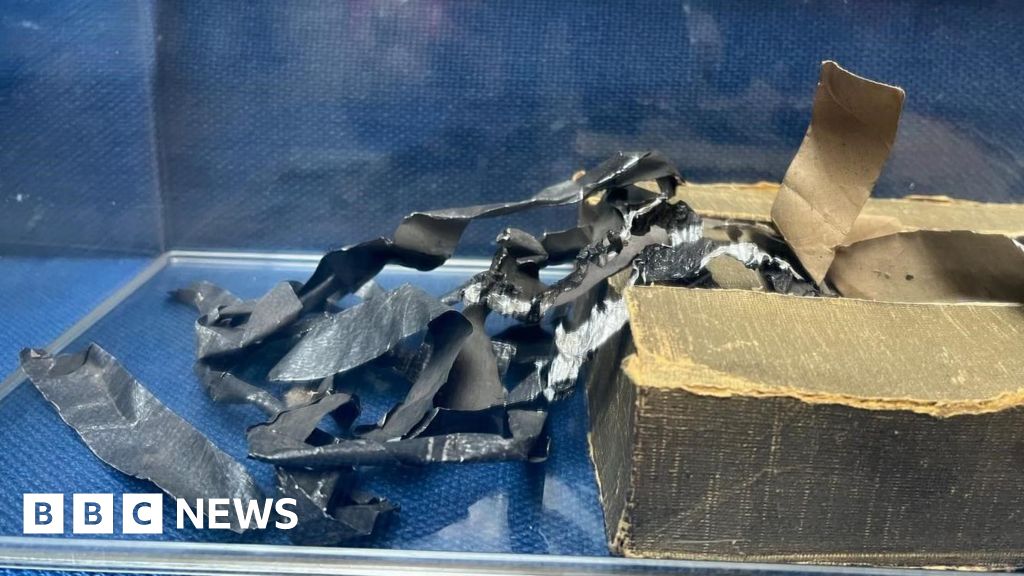 BBC
BBCSome metal tape in a tattered cigar box at an aircraft museum represents some of the work used to fool the Nazis in the lead-up to D-Day on 6 June 1944.
Sitting behind perspex at the Boscombe Down Aviation Collection, the tangled strips of aluminium tape, called chaffing, disrupted German radar alongside other methods like reflector balloons on small boats.
When dropped at the right point over the channel, the tape would be picked up on radar and fooled the Germans into believing an invasion was happening.
The method was invented by Barnes Wallis, who also famously developed the “bouncing bomb” for the Dambusters raids.

Graham Horner from the collection said the story made him “tingle.”
He said aircraft were flown very accurately in order to drop the metal tape.
“Barnes Wallis designed this tape to be the right length to simulate ships coming across the channel,” explained Mr Horner.
After the operation, there was some still left on the aircraft.
One of the bomb aimers involved, John Bell, collected some, gifting it as a memento to Mr Wallis who then put it in the cigar box.
His daughter felt it should be kept, later giving it to someone in touch with the museum.

Boscombe Down Aviation Collection has a number of aircraft used during World War Two, including an Auster observation aircraft and the front of a Dakota used to drop paratroopers on D-Day. It also has the rebuilt the cockpit of a Lancaster Bomber.
The collection is based at Old Sarum airfield, which was used to waterproof thousands of vehicles for D-Day.
On 8 June, the museum is holding a D-Day open day featuring archaeologists talking about their World War Two work, guest speakers and an opportunity to try packing a parachute.


